Near Famous |
||||||||
 |
||||||||
| Photography by Charles W. Melton | ||||||||
| Nature Photography | ||||||||

NECTAR BATS
of southeastern Arizona
Nectar bats feed on the nectar and pollen of agave and columnar cactus, such as saguaro and organ pipe. Their long tongues enable them to reach deep within the flowers to obtain the nectar, much like hummingbirds. They also feed on cactus fruit. They are fascinating creatures and can easily be watched for they also drink the sugar water found in hummingbird feeders.
Most of their range is in Mexico, and even farther south, but two species occur in southeastern Arizona from April to October. They migrate here to breed and to take advantage of the flowering cactus and agave. Of the two species, the Mexican Long-tongued Bat, Choeronycteris mexicana, has a longer snout but the best way to separate the two species is by looking at the membrane between the legs. The tail membrane of the Mexican Long-tongued Bat is only slightly indented and gives the appearance of a skirt. The Lesser Long-nosed Bat has no tail resulting in a deep indentation of this membrane which makes it look like it is wearing pants. More information on these bats can be found at the Arizona Game and Fish web site at www.gf.state.az.us/. Use the search feature to locate PDF documents on each of the species.
All images are of wild, free-flying bats taken in Miller Canyon, Huachuca Mountains, Arizona.
 |
| Nectar bat feeding at agave flowers. They can hover for only brief periods and then must circle around and return to the flowers. |
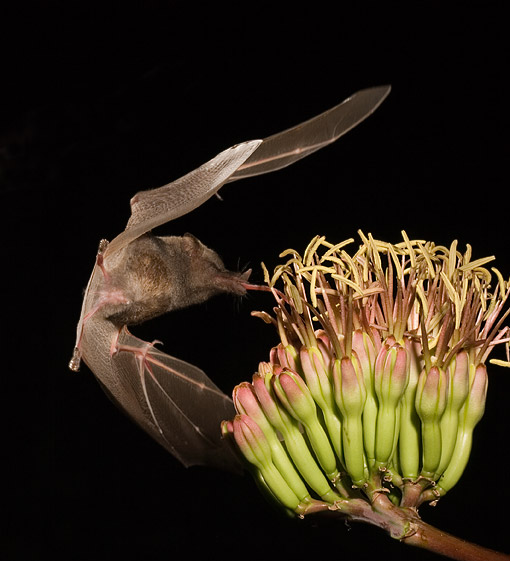 |
| Nectar bat extending tongue into agave flower. The tongue can extend up to one third the body length. |
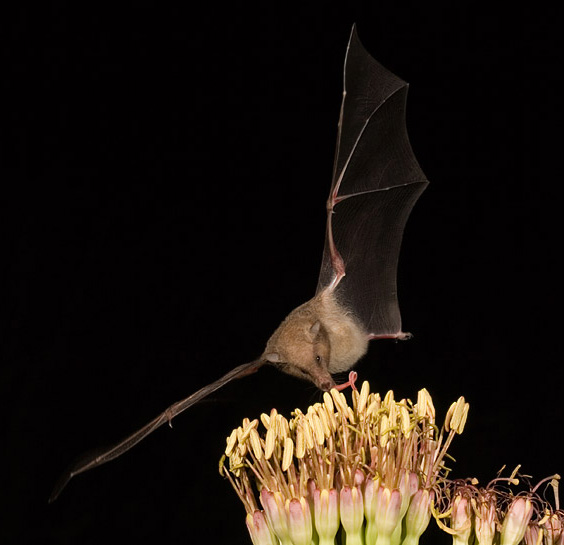 |
|
Another view of the nectar bat tongue extending into the agave flowers.
|
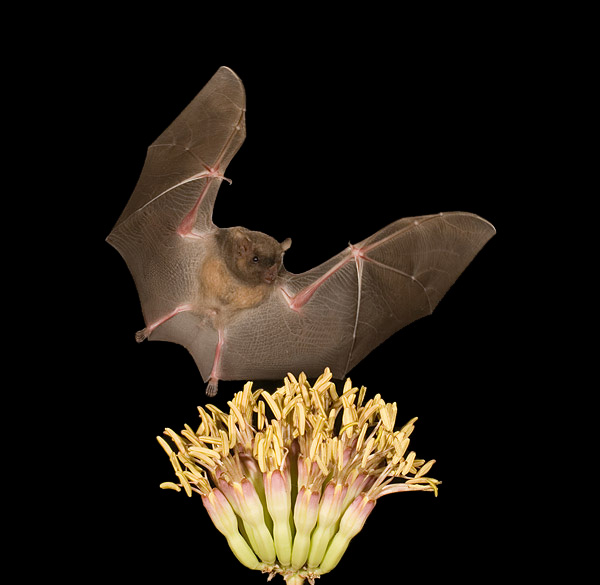 |
| Mexican Long-tongued Bat, Choeronycteris mexicana, can be distinguished by the slight indentation in the tail membrane which gives it the appearance of wearing a skirt. The wingspan can measure from 13-15 inches. |
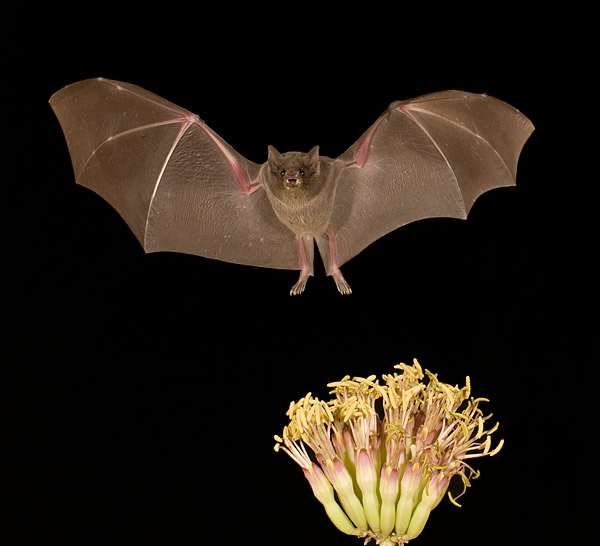 |
| Lesser Long-nosed Bat, Leptonycteris curasoae, is distinguished by the deep indentation of the membrane between the legs giving the appearance of wearing pants. The wingspan can range from 14-16 inches. |
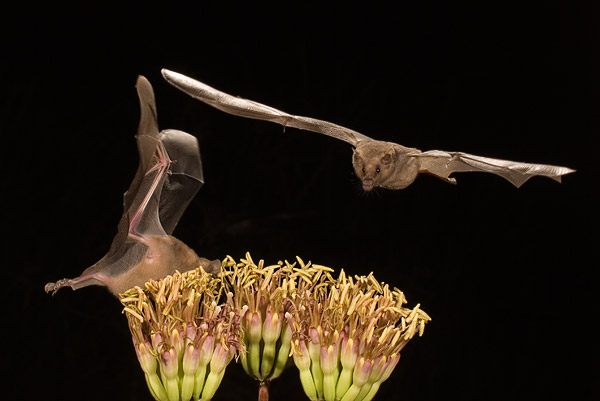 |
|
Here you can see one nectar bat getting nectar as another bat approaches.
|
 |
|
Here you can see the flap of skin extending from the tip of the nose that is present on these two species of nectar bats.
|
| All photographs and video on these web pages are the exclusive property of Charles W. Melton and are protected under United States and International copyright laws. The photographs may not be copied, reproduced, manipulated, stored, or distributed without written permission. All rights are reserved. | ||